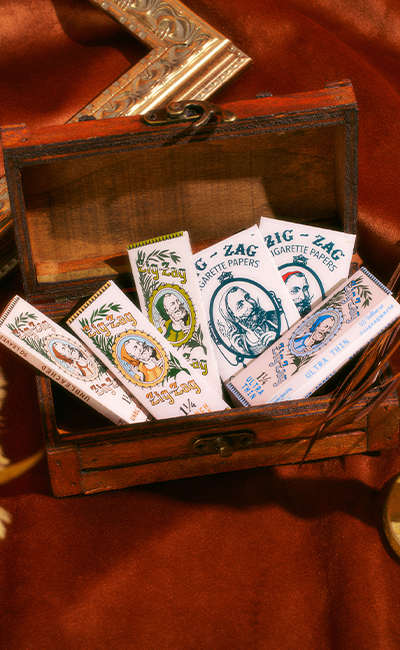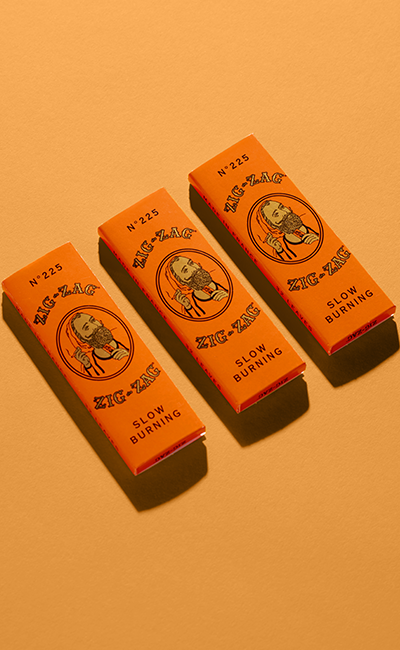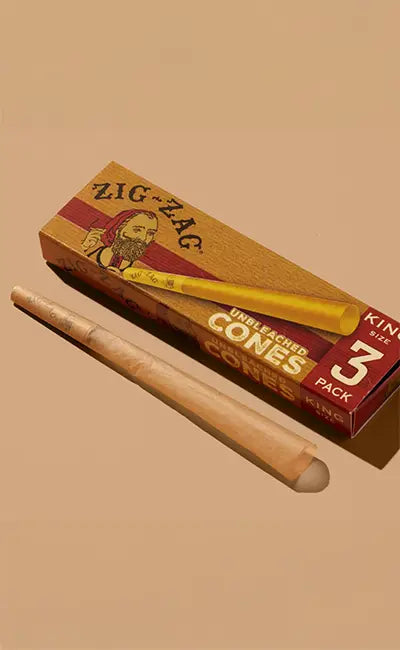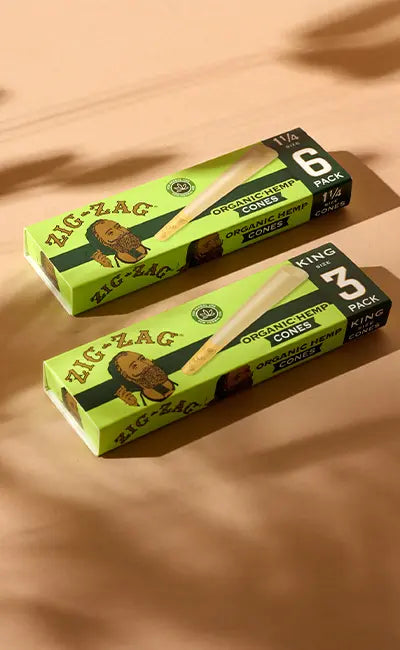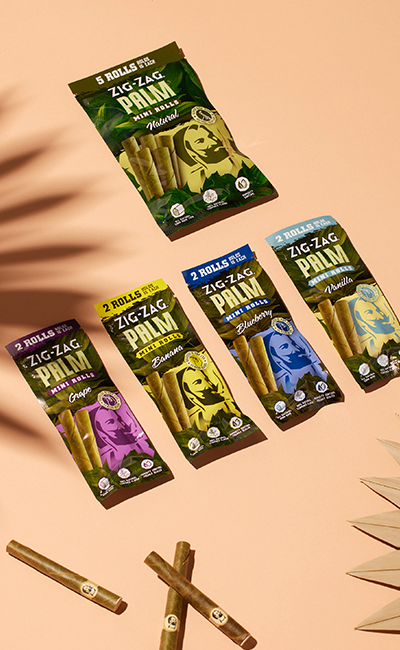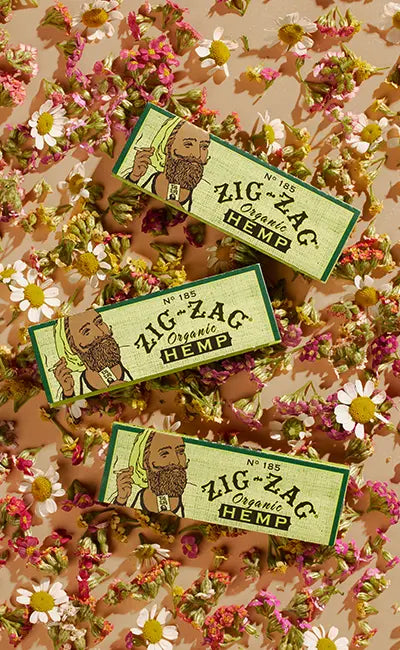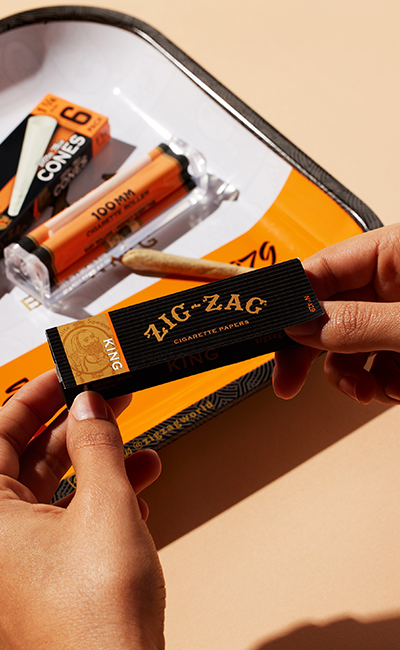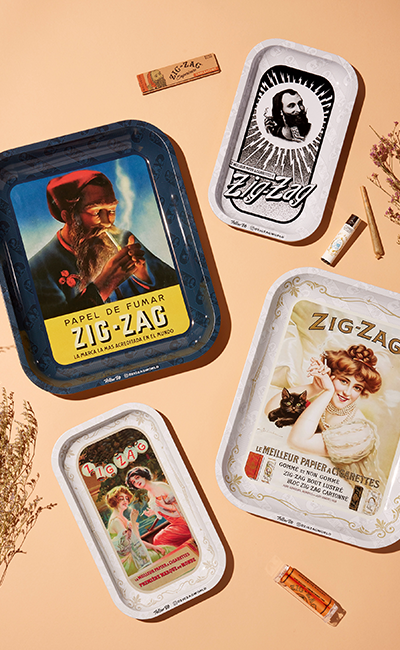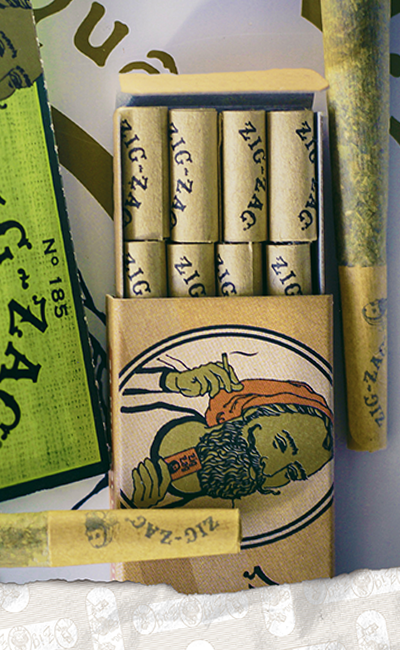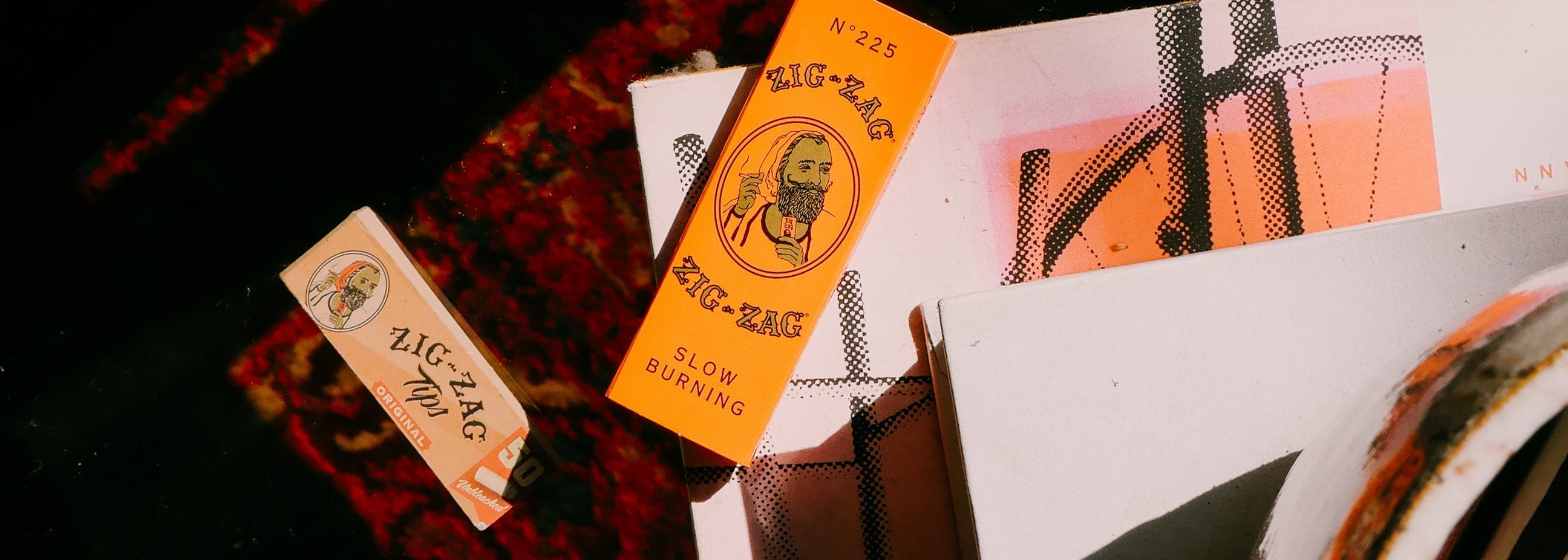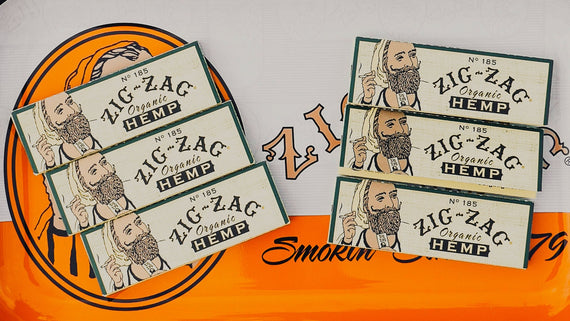Why do you need rolling tips and how to use them?

Rolling tip, joint filter, or crutch - whatever you choose to call it, the rolling tip has become the norm in the joint rolling world. But why? Why use a rolling tip? Why not do away with it completely?
This article will look at the benefits of using a rolling tip. We will look at how to roll a joint with a tip and introduce you to pre-cut and pre-rolled versions that will save you time. The art of joint rolling isn't easy. It takes practice, but you will be well on your way to rolling the perfect joint with the step-by-step guide. Read on to learn more!
What are Filter Tips and Why Use Them
A filter tip is a small piece of rolled-up card stock that creates the mouthpiece at one end of your joint. The crutch can be cut from an index card or a business card and is usually around 1x2". This small piece of card stock is rolled into a filter and rolled inside the rolling paper, which creates a crutch end of the joint.
Adds Structure to Rolling Paper
A crutch will make the joint sturdier and keep it open on one end. Without a crutch, your joint can close on itself or get squished, which will restrict the airflow and prevent a smooth draw. The crutch also adds to the structure of the rolled joint. Using a rolling tip with quality rolling papers is the first step to rolling the perfect joint.
Safety Feature
The rolling tip acts as a safety feature by providing some distance between the burning tip of the joint and your fingers and mouth. Without a rolling tip, you run the risk of burnt fingers. Rolling tips also allow you to waste less of your favorite herb!
Filtering
The crutch also stops you from sucking particles through the joint and into your mouth, ruining the experience. Overall, using a rolling tip makes for a good joint. While it is not essential, choosing to do away with the crutch can lead to a less than desirable smoking experience.
Zig-Zag Rolling Tips

Rolling your tips is easy if you have a pair of scissors and some card stock. But, the professional option is pre-cut tips. As the name suggests, pre-cut tips are cut already and are usually packaged in a convenient booklet. Pre-cut tips are explicitly created for joint rolling and are widely available. Zig-Zag Tips are essential for any serious joint roller! Don't forget to pair them with high-quality rolling paper.
Zig-Zag Original Tips
Zig-Zag Original Tips are GMO-free, vegan friendly, unbleached, and chlorine-free. These tips are also biodegradable! The design makes them easy to work with. Zig-Zag Original Tips are packaged in a booklet and have perforations that allow you to create multiple shapes and size crutches. Each booklet contains 50 pieces of 18x60mm pre-cut tips.
Zig-Zag Wide Tips
Zig-Zag Wide Tips are the same as Zig-Zag Original tips as they are also GMO-free, vegan friendly, unbleached, and chlorine-free. The difference is that they are wider. The size of these wide tips is 25x56mm. This size allows you to make a longer crutch, ideal for rolling king-size joints. These tips are biodegradable and come in a neat booklet of 50. These tips also feature perforations that make creating different size crutches easier.
Zig-Zag Pre-Rolled Tips
Zig-Zag Pre-Rolled Tips offer ultimate convenience. No cutting or rolling of the crutch is required. With Zig-Zag Pre-rolled Tips, you are ready to roll your joint right away. These tips are also unbleached, biodegradable, vegan friendly, GMO, and Chlorine Free. Zig-Zag Pre-Rolled Tips come in a pack of 24 tips with a width of 18mm. For the most convenient option, choose Zig-Zag Pre-Rolled Tips!
Joint Rolling with a Crutch
Rolling a good joint takes a little practice. It is essential not to be discouraged when starting. Rolling the perfect joint on the first try is rare. Be prepared for a bit of trial and error. There are several rolling techniques, but the principle is the same. Evenly distribute your ground dry herb and a filter tip inside a sheet of quality rolling paper, roll it, lick the glue strip and stick. This section will look at a step-by-step guide to rolling a classic joint.
Preparation
A flat surface such as a table can make joint-rolling easier. A rolling tray can prevent a mess and provide a flat surface to work on. Gather your rolling supplies. Make sure to use quality rolling papers. If it is your first time, avoid ultra-thin rolling papers like rice paper as they can be challenging to work with. Feel free to experiment with different papers to find one that works for you. As a rule of thumb, king-size rolling papers will be easier to work with than smaller papers.
Make the Rolling Tip

As mentioned earlier, including a rolling tip is ideal for creating the perfect joint, but how is it made? Finding the suitable material can sometimes be challenging, but an index card or card stock of a similar thickness will do the trick. You will need to cut a piece of card stock roughly 1x2".
You can simply roll it up with your fingers, but this may not be effective in keeping debris out of your mouth. We recommend you make a few small accordion-like folds at one end of the card stock and then roll the rest of it around itself. What you are trying to achieve here is an M or a W within a circle to create a more effective filter tip. To save some time and effort, try Zig-Zag's pre-cut rolling tips.
Filling the Rolling Paper

Begin by placing your crutch in the fold of the paper on one side. The crutch will determine the diameter of your joint. Allow about one-third of the crutch to stick out the side - you will see why in a minute.
Your rolling paper needs to be positioned with the gummed edge on the inside of the fold and the unglued side closer to your body. Most people roll with the crutch side to the left, offering greater control during the rolling process.
Place your ground herb along the length of the fold. Be sure that your filler is evenly dispersed. Lumps and bumps can cause an uneven burn. For the joint to burn evenly, it will need adequate airflow and for the herb to be evenly distributed from one end to the other.
If you are rolling a pinner joint (thin joint with no taper), the two edges of the rolling paper should be parallel. If you plan to roll a cone shape joint, you will need to begin with the two edges at an acute angle to each other. You will also need to place the herb in a tapered shape on the rolling paper. The principle is much the same whether you are rolling a pinner joint or a cone joint.
Start Rolling the Joint
Roll the joint by rubbing the two edges of the paper between your thumbs. The rolling motion will further distribute the filler while creating the desired shape of the joint. This process will help you avoid a loose roll which can lead to an uneven burn. The rolling technique may take some time to get used to, but you will gain a feel for how to create an even shape with practice.
Tuck and Roll and Seal
Tucking, rolling, and sealing is the tricky part. While rolling with your fingers and thumbs, you need to tuck the unglued side under the glue side. Beginning with the crutch end can help you tuck and feed the un-gummed edge along the length of the joint.
Continue rolling up the remaining paper until only the glue strip is exposed. Lick along the length of the glue strip, applying a little moisture to the paper. Complete the roll while applying light pressure along the length of the glue strip with your fingers. The pressure will stick down the glued side and seal the joint, preventing it from unraveling.
Pack and Twist the Excess Paper
Remember the crutch that we left sticking out the crutch side of the rolling paper? It is time to pack the joint by pushing the crutch into the joint. You can further pack the open end of the joint with the back of a pen or any thin object.
Tapping the crutch side of the joint on a hard surface will also pack the filler inside the joint. Twist the excess paper at the open end of the joint to prevent the filler from spilling out. When you're ready, light up and enjoy!
Practice
Rolling a joint properly requires good basic technique. A poorly rolled joint will negatively affect the smoking experience. Take your time and enjoy the process of rolling, and don't be afraid of starting over. Specific rolling papers are easier to roll than others. Try Zig-Zag French Orange rolling papers. These rolling papers have a high level of rollability and are great for the novice and the pro.
Alternative Ways to Enjoy a Joint
Rolling perfect joints can be time-consuming, especially if you want to roll a joint that provides an even burn and a smooth draw. While rolling your joint is the most affordable way to go, there are a few alternative ways to enjoy a quality smoking experience. Stay with us to find out more!
Pre-Rolled Joints
These joints are the most expensive option available. All the hard work has been done for you. All you need to do is light up, sit back and enjoy. The downside to buying pre-rolled joints is that you have little control over the quality of the filler. While rolling your own is much more affordable, a joint that has been pre-rolled offers convenience. Imagine not having to go through the process of rolling a joint from scratch!
Pre-Rolled Cones

Pre-rolled cones are super convenient. They are essentially a pre-rolled shell of a joint that requires filling. Simply fill the empty cone with your favorite ground herb, pack it, and twist the excess paper, and you have yourself a perfect joint! Pre-rolled cones may not be as affordable as rolling papers, but they are ideal for creating a joint quickly as there is no rolling involved. Try Zig-Zag Cones for a convenient and premium smoking experience.
Rolling Machines
Rolling machines make the rolling process much easier and faster. Moreover, these inexpensive devices are ideal for both beginner and veteran joint rollers. A rolling machine can roll a perfect pinner joint. But because of the nature of the machine, you won't be able to roll a cone joint.
Rolling machines are small enough to throw into a handbag, and they make it easy to roll a joint on the move. Zig-Zag rolling machines are made from high-quality materials and are designed to put up with a lot of use.
Conclusion
While using a rolling tip is not essential for creating a typical joint, it does provide some structure to the joint and keeps you from drawing debris into your mouth. It also creates some space between the mouthpiece and the burning herb, preventing joint burns.
Choosing to use a tip is a matter of personal preference, but overall, it provides an easier roll and a more pleasurable experience! Creating your crutch is as easy as cutting one out. You can use just about anything, from a business card to plain card stock. If creating your own sounds like too much hassle, there are pre-cut and pre-rolled versions, making the process a lot easier!

